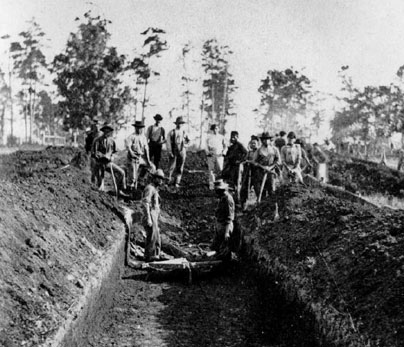Andersonville National Historic Site, in Andersonville, Georgia, is a memorial to United States prisoners of war. It consists of a museum and a cemetery on the site of the Camp Sumter military prison camp. The Confederate Army used the camp to house Union soldiers captured during the American Civil War (1861-1865).

The Andersonville camp was one of the largest military prisons established during the Civil War. It was built in early 1864. The prison consisted of a large area of open ground enclosed with a stockade of pine logs. Sentry boxes were located along the top of the stockade. The guards were ordered to shoot anyone crossing the deadline, a line of wooden posts 19 feet (5.8 meters) inside the wall.
Prisoners lived in makeshift huts and holes dug in the ground. Diseases spread quickly in the unsanitary conditions. The Confederate government could not provide adequate housing, food, clothing, or medical care to the Union captives. The government was faced with poor economic conditions, an inadequate transportation system, and a need to concentrate all available resources on its army. In addition, the prisoner-exchange system between the Union and the Confederacy broke down, and the camp became more and more crowded.
Captain Henry A. Wirz was put in command of the camp in March 1864. By August of that year, 32,000 prisoners were being held in an area designed for 10,000 soldiers. During the 14 months the prison existed, more than 45,000 Union soldiers were confined there. Almost 13,000 of the prisoners died in the overcrowded conditions from such causes as disease, malnutrition, and exposure to the weather. The dead were buried in shallow trenches near the camp. After the war, Captain Wirz was tried and executed for war crimes.
The Andersonville National Cemetery was established in 1865. It began when nurse Clara Barton and former prisoner Dorence Atwater visited the site after the war. Barton and Atwater came to Andersonville to identify the bodies of Union soldiers who had died in the camp and to mark their graves. The cemetery continues to serve as a burial place for military veterans.
Visitors can also tour the National Prisoner of War Museum. The museum offers exhibits on prisoners of war beginning with the Revolutionary War in America (1775-1783).
Congress authorized the establishment of the Andersonville National Historic Site in 1970. The National Prisoner of War Museum was dedicated in 1998.
